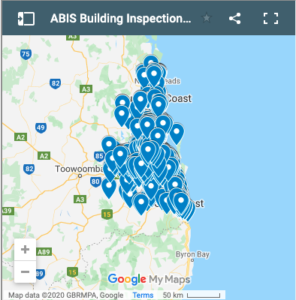Over the past 15 years and thousands of inspections, ABIS have researched numerous technologies. In recent years, we have adopted thermal imaging which has proven to be a very useful tool in improving the quality of our inspections.
However, due to recent outrageous claims from unscrupulous inspectors, we feel compelled to do some “myth busting”.
Thermal Imaging is neither a magical device nor a guarantee of finding hidden defects or termite activity despite the claims of some inspectors who mislead people into believing that thermal cameras can “see” inside walls. Basically, a Thermal Imaging Camera is a useful tool, as an addition to, not a substitute for the knowledge, skills and experience of a good inspector.
Thermal imaging does not “see” inside walls, unlike X-ray, CAT Scan or MRI. Thermal images showing the wall framing inside walls can be misleading as the darker lines of the frame are visible only because the frame acts as a heat sink draining heat from the wall sheet and showing up as a dark spot. The frame lines on the image are actually due to colder sections of wall sheeting as a result of the heat being drained away from the surface of the wall sheet into the frame and not the frame itself being “seen” through the sheet.
Thermal imaging simply provides a temperature reading across a surface, building up a picture from thousands of temperature measurements in its field of view. It is useful in showing up patterns of moisture as moisture evaporates and cools the surrounding material. Similarly, as termites maintain a constant temperature between 28c and 32c in their workings, if there are enough of them and the ambient temperature is cooler than 28 degrees, termite activity shows up as a hot spot. No thermal imaging camera can show termites moving around inside a wall or under a slab.
The detection of defects and pest activity using thermal imaging is a complex process requiring specialist knowledge, skill, experience and training. The process takes into account the climate, the current weather, the use and occupancy of the structure, the time of day, the type of construction, heating and air conditioning, plumbing, wiring, construction materials, surface finish, and even colour.
So beware of any inspector who asserts that a thermal camera can magically “see” inside walls and is guaranteed to find hidden structural defects or termites.




